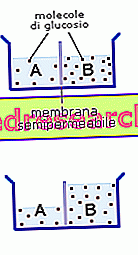Adenovirus: introduction
In the microbiological field, the " Adenoviruses " represent a family of viruses comprising a hundred different serotypes: of these 100 species, 57 have been identified as possible carriers of infection in humans, responsible, in turn, for 5-10% of all infectious processes affecting the upper respiratory tract of children and adults (such as, above all, tonsillitis, colds, pneumonia and pharyngitis).

Microbiological analysis
The viruses belonging to the Adenovirus family were observed, for the first time, in 1953, isolated in a flap of human adenoid tissue: starting from this date, numerous studies began, focusing on the microbiological importance - in terms of pathogenicity, virulence and structural description - of these pathogens. Adenoviruses are all DNA viruses, with double linear chains, with icosahedral symmetry and lacking a mantle (lipid envelope); they have a variable diameter from 60 to 90 nm and a molecular weight equal to 20-25 x 106. The Adenoviruses have been awarded the title of the largest virus without a shell. They consist of 240 capsomers, typical proteins that cover the virus that form the capsid: more precisely, they consist of 240 exons ("faces"), 12 pentons (vertices) and 12 fibers (one for each vertex). The fibers, which may differ between the different serotypes, are indispensable for the virus to take root in the target cell. The capture of the viral fibers to the target cell is also favored by the presence of the so-called VAP, viral attack proteins.
Continuing with the microbiological analysis, Adenoviruses produce distinct proteins from abbreviations: E1A, E1B, E2, E3, E4, VA RNAs, each used for a peculiar function.
Earlier we mentioned that there are 57 Adenovirus serotypes that can infect humans: in turn, these viruses were classified into six species, distinguished by the first six letters of the alphabet.
Data and statistics
- The most widespread adenoviruses are serotypes 1 and 7
- Type 2 and 5 human adenoviruses (also known as mastadenoviruses) infect mammals in general
- 5-10% of pediatric patients are diagnosed with an Adenovirus infection, referring to types 1, 2, 5, 6
- Type 4 and 7 Adenoviruses are the most widespread among the military
- Type 14 and 21 Adenoviruses are associated with acute respiratory infections, especially among the military
- Keratoconjunctivitis is an expression of viral insults supported by Adenoviruses types 8, 19 and 37
- Conjunctival fever is mediated by Adenovirus serotypes 3 and 7, typical of pool-goers
- Adenovirus serotypes 2, 3, 5, 40, 41 are responsible for gastrointestinal syndromes
- Infantile haemorrhagic cystitis appears to be caused by Adenovirus serotypes 11 and 21.
- Adenoviruses 12, 18 and 31 can cause undifferentiated small cell tumors (an experiment demonstrated by inoculation of the virus in laboratory animals)
Contagion
Saliva is the typical vehicle for Adenovirus contamination: in fact, most patients are infected with Adenoviruses diffused by aerosols, faecal gold and eye contact with infected hands. Given this, we understand how Adenovirus infections create damage especially on the mucous epithelial cells of the respiratory tract, conjunctiva, cornea and gastro-intestinal tract. Tonsillitis is often the expression of an insult supported by Adenovirus: this depends on the persistence of the virus in the lymphoid tissue.
Immediately after the local replication of the Adenovirus, viremia is observed with the virus spreading to different districts.
Adenovirus and associated diseases
The incubation period of Adenoviruses varies according to the pathogen serotype; in general, after having contracted an Adenovirus infection, the symptoms appear after an approximate period of 3-10 days.
The most widespread diseases caused by Adenoviruses are pharyngitis, respiratory diseases, conjunctivitis, gastroenteritis, pneumonia and haemorrhagic cystitis (the pathologies just described are reported in decreasing order of frequency).
FARNIGITI : typical affection of children under 3 years, Adenovirus pharyngitis manifests itself with a marked alteration of the basal temperature, while older children, aged between 7 and 8 years, infected with Adenovirus develop more frequently pharyngo-conjunctival fever. Often, Adenovirus pharyngitis induces inflammatory swelling of the tonsils, associated with dysphagia and odynophagia. Common to all forms of pharyngitis are flu-like symptoms such as chills, nasal congestion, fever, headache, myalgia and cough.
ACUTE RESPIRATORY DISEASE : the respiratory tract appears to be the preferred target of Adenovirus type 4 and 7: pathogens, by infecting humans, cause characteristic symptoms, such as cervical adenitis, pharyngitis, fever and cough. In addition to these typical prodromes, the health of the victim can degenerate into bronchiolitis (typically infantile respiratory tract disease), croup (subglottic laryngeal obstruction), laryngitis and viral pneumonia. In infants, the acute respiratory illness of Adenovirus can manifest itself in the form of small epidemics, with pharyngitis, conjunctivitis (with a granular and follicular character) and inflammation of the lymph nodes.
CONJUNCTIVITY and CHERATOCONGIUNTIVITE : Adenovirus-mediated conjunctivitis is observed, in particular, among pool users and shipyards, and is often associated with tonsillitis and respiratory infections. Epidemic keratoconjunctivitis presents an incubation of 8-10 days: it begins with mild respiratory symptoms, lymphadenopathy and follicular conjunctivitis. Subsequently, the disease tends to degenerate into persistent sub-epithelial corneal keratitis.
GASTROENTERITE : it seems that a modest percentage of gastroenteritis (estimated around 15%) is caused precisely by Adenovirus; these infectious agents, especially the serotypes 2, 3, 5, 40 and 41, are quite resistant to acid pH, therefore they are able to easily reach the intestine and multiply, creating damage. Adenoviruses are subsequently eliminated by the host through the faeces. Adenovirus gastroenteritis results in diarrhea, abdominal pain and vomiting.
In immunocompromised patients (AIDS patients, patients who have undergone a solid organ or bone marrow transplant), the damage created by Adenoviruses may be more important; more often, this category of patients is diagnosed with severe interstitial pneumonitis, colitis, fulminant gastroenteritis, hepatitis, encephalitis, urinary tract infections, infections of the central nervous system, and severe hemorrhagic cystitis.
Adenovirus infections: diagnosis
The diagnostic assessment of adenovirosis is obtained by isolating the virus directly in the pathological material or, indirectly, by controlling a specific antibody movement.
Adenovirus gastroenteritis can be diagnosed by analyzing a fecal sample in a specific laboratory; for non-cytopathogenic viruses, the ELISA diagnostic technique on faeces or cellular systems may be useful to ascertain the diagnosis. The PCR method is also specific for ascertaining or not an Adenovirus gastroenteritis.
The identification of the Adenovirus can also be carried out through immunofluorescence, or with complement fixation (with specific antisera).
Care and prevention
Since there is no antiviral drug for Adenovirus-supported infections, therapy is purely symptomatic: paracetamol is particularly suitable for this purpose, to reduce fever and shorten healing time. To treat conjunctivitis triggered by Adenovirus, it is advisable to apply specific eye drops (subject to medical prescription).
The population can be subjected to vaccination: there are live and attenuated vaccines for serotypes 4 and 7, whose administration (in the form of enteric capsules) is recommended for recruits.
In general, hand washing is a very valid prophylaxis rule to avoid contracting Adenovirus after contact with an infected person.



